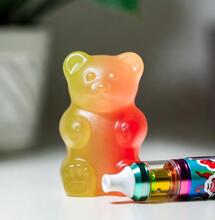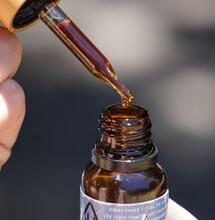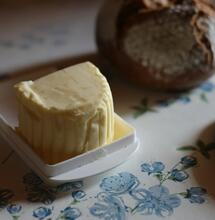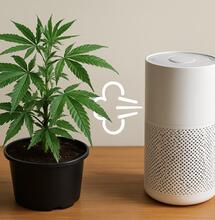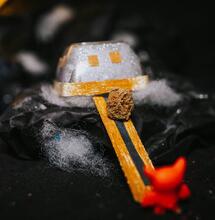How to Make CannaBalm?
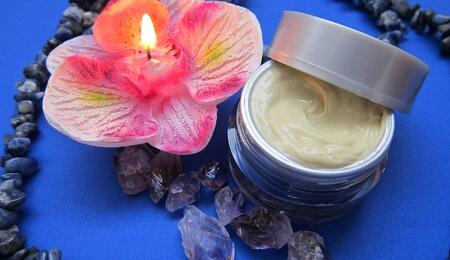
While it’s easy to find all kinds of nice cannabis balms and salves these days, you can always make a high-quality herbal balm yourself as well. There are different bases that could be tried out while making cannabis balms at home, such as shea butter, coconut oil or beeswax. Balms can then be used for routine skincare, and could also offer relief from various ailments. In this article, we guide you how to make your own cannabis balm or salve, and explore different ways how to use this type of medicinal preparation.
Topical cannabis balms and salves have grown massively in popularity in recent years. Enthusiasts swear by their use to treat all manner of ailments, including rheumatoid arthritis, lupus, dermatitis and psoriasis. When properly prepared, topical Cannabis balm can have analgesic, relaxing, anti-inflammatory, decongestant and regenerative properties, and such preparations have been present in the human pharmacopeia for thousands of years.
In fact, as our understanding of the complex nature of the endocannabinoid system increases, we are beginning to comprehend the true importance of the body's endogenous (naturally-occurring) cannabinoids. Lab studies have demonstrated that when endocannabinoids are artificially blocked, skin injuries healed far more slowly. Application of topical Cannabis salve also caused skin allergies to heal much faster.
How to Prepare a Cannabis Balm at Home?
The procedure for making cannabis balms and salves is similar to that for making 'cannabutter.' A fatty base - one that can be stored at room temperature for several weeks to avoid rancidity, such as shea butter, coconut oil or beeswax - is substituted for butter, and herbal Cannabis or Cannabis extract is dissolved in the base. If you utilize a food-safe base, such as coconut oil, the product can also be used to make 'medibles.'
If you have access to or can make your own 'full extract' medicinal Cannabis oil, that would be ideal. However, good quality hashish or herbal Cannabis will also yield excellent results, although you may need to use a little more to achieve the desired concentration.
Tools that you need for making a balm/salve:
- Large soup pot
- Sturdy, heat-resistant plastic mixing bowl (in which to place ingredients)
- Cheese-cloth or muslin (to strain your salve)
- Wooden or plastic spoon for mixing
- Smaller bowl or jar (for storing the finished product)
- Cannabis buds, hashish or oil solution
For best results, it is advised that you use around a half-ounce of herbal Cannabis per half-cup of oil; if using hashish, around a quarter-ounce per half-cup will yield similar results. When using 'full extract' oil, an eighth-of-an-ounce in a half-cup of oil should be sufficient.
Instructions:
- Place your fatty base into your plastic mixing bowl, and add your Cannabis products.
- Fill the soup pot halfway with water and set it on the stove to heat.
- When the water begins to approach boiling point, reduce the heat slightly, so that a constant simmer is achieved.
- Place your plastic mixing bowl inside the soup pot, making sure that no water can enter the bowl, and gently heat the contents until the fat has become fully-liquid.
- When the fat has turned to liquid, use a clean wooden or plastic spoon to mix the ingredients together, so that the oil can fully penetrate and dissolve your Cannabis products.
- Continue to gently simmer for between thirty minutes and one hour - if using herbal Cannabis, a longer simmer time is advised.
- After the required simmering period is complete, remove your plastic bowl from the pot; remove the pot from the heat and set it aside.
- Place the cheesecloth or muslin over the smaller bowl in which you intend to store your salve - you may wish to use sieve to hold the muslin in place - and strain your Cannabis-infused liquid oil into the smaller bowl or jar beneath.

How to Store and Use Canna Balms and Salves?
Allow your salve to cool completely before using it. When properly stored (in a cool, dark place, for best results), your salve should keep for at least two months. As is, the salve can be used for various topical applications; you can also use it as a base to create specialized creams, lotions and ointments for use against specific conditions.
If using beeswax as your base, you may wish to add other, more liquid oils for use as a body cream or lotion. Beeswax is quite hard at room temperature, and even if used for making lip balm, adding small quantities of coconut oil will soften the cannabis balm and allow for increased penetration through the epidermis. Alternatively, if your base is coconut oil or shea butter - both of which are solid, but soft, at room temperature - you may wish to add beeswax to 'firm up' your salve. When adding other oils, it is advisable to gently reheat your salve so that the oils can easily mix together, without separating.
To make smooth, non-greasy body creams and lotions, adding almond or grapeseed oil is an excellent choice, as these are oils that deeply penetrate the skin and leave little-to-no greasy residue behind. Adding aloe vera gel is also highly recommended, as not only does it reduce the level of greasiness, it also has its own antibacterial properties and can make your product delightfully cool and soothing.
Another option is to add your freshly-prepared Cannabis salve to your own existing skincare products, such as hand cream - or even shampoo and conditioner. However, this option is only recommended if existing products are free from potentially-harmful additives, such as sodium lauryl sulfate (SLS), parabens and synthetic fragrances.
Your Cannabis balm can be endlessly tweaked to yield the exact results needed to treat your particular condition, or simply to produce an array of skincare products that will keep your skin in far better condition than most commercially-available products can ever hope to achieve. With such simple and quick procedures, anyone can achieve these results, get healthier, better-maintained skin, and potentially save hundreds - if not thousands - of dollars every year on purchasing overpriced and potentially damaging commercial products.
Also read on Soft Secrets:
.jpg)
